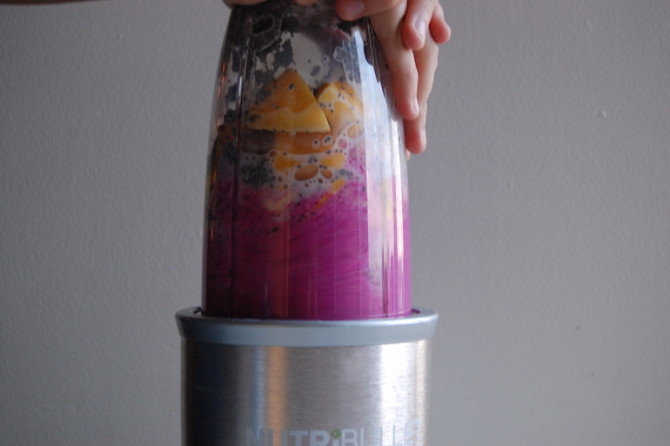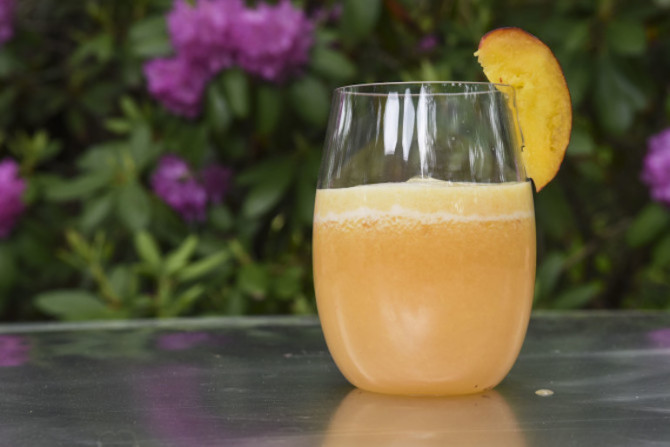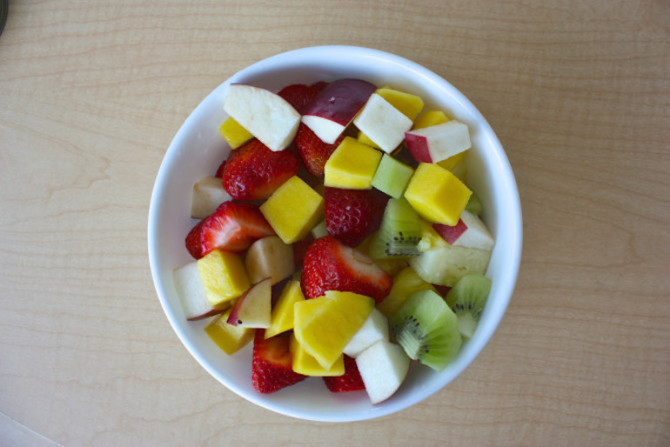I’ll warn you early on: This post may get a little scientific. But bear with me because I’ll take it slow and go in order, I’m going to explain the good and the bad, the pretty and the ugly, the best and the worst of fruit from it’s whole form all the way to a Fruit Roll Up.
Whole Fruits

Photo by Melissa Gallanter
Fruits in their natural, whole forms are fiber-filled and help slow the absorption of fructose, which is the sugar mainly found in fruit. It’s recommended to have 3-5 servings of fruit every day, and eating an overall well-balanced diet rich in fruits and veggies is proven to reduce risks of cancer, heart disease, and promote and longer and healthier life. This isn’t new news.
Whole fruits are also a really important source of fiber, which helps fill you up before overeating, reduce cholesterol, and whole lot more.
#SpoonTip: If you have more than 3-5 servings of fruit, try sticking with temperate fruits like apples, pears, and berries. They generally have a gentler effect on blood sugar levels than tropical fruits like bananas, mangos, and pineapples.
Smoothies

Photo by Ethan Cappello
Smoothies contain fruit’s skin and all the fiber, but blending breaks down the fiber, making the fruits easier to digest. Smoothies help create a slow, even release of nutrients into the blood stream, but they can rob you of satisfaction after eating a meal. A study published in the International Journal of Obesity found that when people consumed fruits in the form of smoothies, they consumed 12% more calories overall in comparison to eating whole fruit and solid food for meals.
That is not to say that smoothies are a bad choice. Smoothies are more filling than juices, and they do keep you more full for longer. Think of it like a spectrum: smoothies are pretty much right in the middle.
And as long as added sugars and hidden ingredients don’t counter the benefits of smoothies, they’re a great breakfast option on the go or an easy snack to make mid-way through the day. Keep away from adding froyo, sweeteners, or juices to your smoothies and instead stick with smoothies that have few ingredients. The fewer the better, even for digestion. For better digestion, keep smoothies within 2-6 ingredients.
Juice

Photo by Phoebe Melnik
Whether we’re talking good old Juicy Juice or the trendy cold-pressed kind, juice ranks slightly further down the spectrum. Juicing extracts the water and nutrients from the fruit and discards the fiber. Yes, your digestive system won’t have to work as hard to break down the fruit and absorb its nutrients. But removing the fiber allows for the juice to be absorbed into the blood stream quickly, which causes a fast spike in blood sugar, which is not such a good thing. And because there’s no fiber, juices won’t keep you full for long at all.
Dried Fruit/Fruit Roll-Ups

Photo by Niki Laskaris
Fresh, frozen, dried and canned fruit all have pretty similar amounts of fiber and minerals. Dried fruit is a particularly significant source of dietary potassium and fiber, and depending on the fruit, different vitamins too. Cooking doesn’t destroy fiber or minerals, and sometimes it can even enhance the vitamin or mineral content of fruits. Added ingredients should just be taken into account, as apples in an apple pie do count towards daily recommendations, but the fruit is then accompanied by added sugar and other ingredients that may not be beneficial to health. On the spectrum, frozen dried, canned, and cooked fruit are up there with fresh fruit.
And as far as fruit products go, check for added sugars and unpronounceable ingredients in applesauces, fruit leathers, and fruit-filled protein or granola bars. The more commercial products, like Fruit Roll Ups and a lot of fruit snack brands barely contain any fruit at all. These products generally make their way far down the spectrum.
The Bottom Line

Photo by Kristine Mahan
Most people are only getting 42% of the daily recommendation for fruit. Sure, eating a whole fruit is nutritionally superior and anywhere else down the spectrum has its disadvantage. So if you don’t normally eat fruit every day, try starting with one serving of a whole fruit with breakfast or as a snack in between meals.
But if otherwise fruits can’t find their way into your diet, drink a cold-pressed juice and bask in the trendiness of a more balanced diet. Add fruit into a smoothie and take it on the go, packing in three servings of fruit into your breakfast.
A whole apple is better than a smoothie is better than fruit leather is better than juices, but any serving of fruit is a serving of fruit. Try and stick with whole fruits, but we all deserve a piece of apple pie to count towards our 5 servings once in a while.


